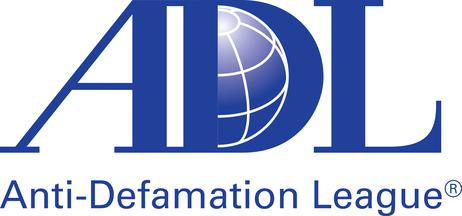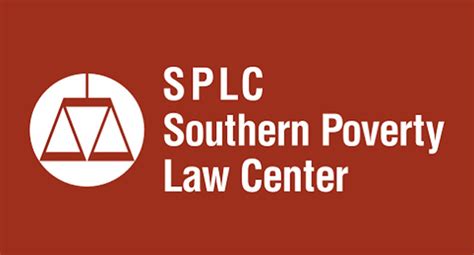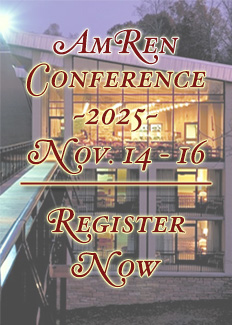Watching the Watchers
James Lubinskas, American Renaissance, August 1999
The Watchdogs: A Close Look at Anti-Racist ‘Watchdog’ Groups, Laird Wilcox, Editorial Research Service, 1998, 102 pp.
Professional “anti-racist” groups play an almost unchallenged role in America in deciding which organizations are “extreme” and therefore illegitimate. In The Watchdogs, Laird Wilcox makes a case that groups like the Anti-Defamation League and the Center for Democratic Renewal are themselves extreme and ultimately more dangerous than the right wing groups they warn about in their fundraising letters. Mr. Wilcox is a longtime observer of radical groups on the left and right and his book is filled with examples of deception and dishonesty used by various “anti-racist” organizations.
The Watchdogs focuses on the history and connections of four of the better known groups: The Anti Defamation League (ADL), the Southern Poverty Law Center (SPLC), the Center for Democratic Renewal (CDR) and Political Research Associates (PRA). Mr. Wilcox is a liberal-turned-libertarian, who notes in the foreword that he was active in the civil rights movement and was once a member of both the NAACP and the Congress of Racial Equality (CORE). He has since been disillusioned by an anti-racist movement that seems mainly interested in ideology-for-profit.
‘Indeed,’ he writes, ‘there is an ‘anti-racist’ industry afoot in the United States that has attracted bullying, moralizing fanatics, whose identity and livelihood depend upon growth and expansion.’
Anti-Defamation

The ADL was founded in Chicago in 1913 as an arm of B’nai B’rith, a Jewish fraternal order. The league is tax exempt and has offices in 31 American cities. It has an annual budget of $34 million and employs over 400 people, including an impressive legal staff. The mission of the ADL is to expose and combat anti-Semitism and to defend the interests of Israel. It does this through a variety of community activities, public relations, and lobbying efforts. It also monitors anti-Semitism, but by lumping epithets and graffiti with a few acts of violence, it tends to exaggerate the problem. Alarmist warnings are good for business, but they scare Jews unnecessarily. Mr. Wilcox quotes from a May 17, 1993 New Republic article by J. J. Goldberg:
In private, some Jewish agency staffers insist the alarmist tone set by a few national Jewish agencies, mainly for fund-raising purposes, is a key cause of Jewish anxiety. Fingers point most often at the ADL … which specialize[s] in mass mailings warning of impending doom and urging donations.
Sometimes the ADL jumps from alarmism to outright deception. In 1981 Mr. Wilcox was asked by a Minneapolis television station to help produce a documentary on right-wing groups. One was the New York chapter of the “Christian Patriot’s Defense League.” Its two representatives, “Jim Anderson,” and “John Austin,” were such stereotypical “bigots” that Mr. Wilcox became suspicious. He discovered that “Jim Anderson” was actually James Rosenberg, who was employed by the ADL. Both Mr. Rosenberg and “John Austin,” whose real name was Kevin Reid, were arrested later that year when police found them on a rooftop in New York City with unregistered rifles. They were apparently posing for photographs to portray the threat of the far right. They were arrested for possession of an unregistered rifle and carrying a weapon in public view, but the ADL managed to get the charges dropped.
The ADL has also had a well-known spying program. In 1993 an internal investigation by the San Francisco Police Department found that intelligence officer Tom Gerard was passing confidential police files to ADL spy, Roy Bullock, who was in turn sharing information with the Israeli government. Mr. Bullock had an ADL “enemies” list of 10,000 individuals and 1,000 organizations. Groups to be spied on even included left-wing organizations like the American Civil Liberties Union and the National Conference of Black Lawyers. Investigators found similar ADL connections to police departments throughout the country.
When the ADL was criticized for spying, Mr. Wilcox reports that National Director Abraham Foxman called his critics — including many left-wing publications like the Village Voice — “anti-Semitic, undemocratic, and anti-American bastards.” The ADL was prosecuted for eavesdropping, conspiracy, and receiving confidential files from police agencies. Despite a seemingly strong case against it, all charges were dropped in exchange for a settlement of $75,000 — to be used to fight hate crimes.
Mr. Wilcox reports that deceit and illegality have not stopped the ADL from enjoying the support of government and law enforcement agencies. Long viewed with suspicion by the FBI — especially by J. Edgar Hoover — in 1985 the ADL got the cooperation it wanted when the agency issued a memo to all field offices to develop formal liaisons with the group. In practical terms this means the FBI gets its information on “hate groups” from the ADL, hardly an unbiased source. The ADL has also worked under contract with the U.S. Commission on Civil Rights to produce reports on right-wing organizations.
Southern Poverty

Located in Montgomery, Alabama, the Southern Poverty Law Center was started by direct mail expert Morris Dees after the presidential campaign of 1972. Mr. Dees was Democratic nominee George McGovern’s finance director, and he used the 700,000-name donor list to start the center. Like the ADL, the SPLC has collected huge amounts of money by warning of the growing danger of the Ku Klux Klan, skinheads, militias, and white supremacists. According to The Watchdogs, its typical appeals are hair-raising overestimates of the strength of “hate groups.” A mid-1980s mailing from the SPLC warned that “Armed Klan paramilitary forces freely roam our wooded hills from Texas to North Carolina,” and that “massive voter registration drives planned by blacks … will cause Klansmen to resort to the nightriding tactics of the past.” Alarmist mailings have helped the center amass reserves of almost $100 million dollars.
After the 1995 Oklahoma City bombing, the SPLC turned its attention to the militia movement. A June, 1995, Klanwatch Intelligence Report claimed that “over 200 militia and support groups operate nationwide.” Three months later, the SPLC reported it had found 73 “militias and support groups nationwide with a total of 30,000 to 40,000 members.” One hundred twenty-seven “militia and support groups” had disappeared in just three months. Mr. Wilcox believes that even the more modest estimates of militia organizations are inflated, since many are small groups that are simply opposed to gun control or the income tax. The SPLC shamelessly promotes “guilt-by-association” but only against the right. Tax protesters are “support groups” for militias or the KKK, but the NAACP is never a “support group” for the Nation of Islam.
Just as disturbing are the SPLC’s powerful connections in the media. It is often the only source academics, journalists or politicians use when they study “hate groups.” On February 20, 1992, USA Today ran an article called “Hate Groups Increase — As Do Their Crimes,” in which it reported the SPLC figure of 346 white supremacy groups. Mr. Wilcox publishes an annual directory of the American Right and says the real number that year was about 50. Why the disparity? The SPLC padded its list with groups that were, according to Mr. Wilcox, nothing but a post-office box, and some that it listed as nothing more than “unknown group,” with the name of a town. Many in the media obediently report the law center’s claims but not everyone is fooled. Betty Dobratz and Stephanie Shanks-Meile, authors of the 1997 book White Power, White Pride!, are not sympathetic to their subject but they also learned to be suspicious of watchdogs:
We relied on the SPLC … reports for general information, but we have noted differences between the way events were sometimes portrayed in Klanwatch Intelligence Reports as more militant and dangerous with higher turnouts than we observed. Also, ‘watchdog’ groups promote “claims’ that are compatible with their political agenda and neglect other ones as they attempt to wield political influence among policy-makers.
The SPLC has also mounted successful legal offensives against neo-Nazis and Klan organizations. In 1987 it won a $7 million dollar judgment against the United Klans of America for the March 1981 slaying of a black man. The suit bankrupted and effectively killed the organization. In 1990 the SPLC was in court again, winning a $10 million award against the White Aryan Resistance (WAR). These high-profile cases against much-criticized groups have helped the SPLC gain credibility and raise funds, but the legal tactics it uses are questionable. As Mr. Wilcox writes, “Had this legal doctrine that organizations are responsible for the acts of their members been established in the 1960’s, it would have decimated the early civil rights movement, a few of whose members were occasionally violent … Suppose a black activist organization was hit with a $7 million dollar judgment because one of its members killed someone in the Watts Riots?”
The Far Left in Disguise
The two other groups profiled in The Watchdogs are not as rich or powerful as the ADL or the SPLC but are reported to be more radical. The Center for Democratic Renewal is run by Leonard Zeskind, whom Mr. Wilcox calls one of the biggest names in American Marxist circles. Mr. Zeskind, who was an organizer for a reportedly Marxist group called the Sojourner Truth Organization during the 1970s and 1980s, has been such an open Communist that Mr. Wilcox writes, “If a counterpart organization on the far right had roots as far into the political extremes as the CDR does, it would have been instantly exposed.” Originally called the National Anti-Klan Network, which itself was an offshoot of the Communist Workers Party, the group’s name was changed to Center for Democratic Renewal in 1986. The CDR now has an annual budget of $300,000 and is based in Kansas City. Mr. Wilcox writes that CDR staffers often attend gatherings like the Marxist Scholars Conference, and are published in such far-left journals as Urgent Tasks, Shmate: A Journal of Progressive Jewish Thought and the British “anti-fascist” magazine Searchlight.
More recently, the CDR was behind the 1996 church-burning scare, which has been widely exposed as completely artificial. Writing in Commentary, former attorney for the U.S. Civil Rights Commission Michael Fumento called the alleged wave of church burnings “a deliberate hoax” and noted:
I established that the CDR had systematically failed to count fires set by blacks in black churches, had labeled as arson a number of fires which responsible authorities insisted were attributable to other causes, and had altogether ignored fires in white churches.
Although it was exposed as a fraud, the church-burning scam was good business for the CDR. It brought in over $9 million dollars from donors in just the first month of the campaign — 27 times the CDR’s annual operating budget — and at one point contributions were rolling in at the rate of $100,000 a day. Mr. Wilcox does not say how much of the money the CDR passed along to churches and how much it kept.
The least influential group described in The Watchdogs is also the farthest to the left. Political Research Associates does not seem to do much more than harass people for attending right-wing meetings and publish tracts attacking anti-Communists and the U.S. government. Located in Cambridge, Massachusetts, it is led by Chip Berlet who is also affiliated with the far-left National Lawyers Guild. Mr. Berlet, whom Mr. Wilcox calls a “veteran Marxist,” has made a career of “exposing racists.” Most of the “racists” tend to be harmless, such as a 70-year-old parish priest who was “outed” for attending a right-wing meeting.
In 1997, PRA accused the Lincoln Institute, which is a black conservative think tank, of having “links” to neo-Nazis. Since Supreme Court Justice Clarence Thomas was on the board of the group he also was “linked” to neo-Nazis. PRA snoops inevitably determine that any anti-Communist movement is really a front for fascism yet they complain bitterly about surveillance of far-left groups. According to The Watchdogs, Mr. Berlet is a popular speaker at the United Front Against Fascism, the Socialist Scholars Conference, and the openly Marxist Brecht Forum. Interestingly, the PRA subscribed to AR for several years under its own name, but has since either lost interest or subscribes through a front.
Moral Superiority
Why are “anti-racist” groups rich and influential? How do they get away with deceitful and sometimes illegal actions? Why has the media rarely exposed their flawed data? Mr. Wilcox believes the answer lies in the “moral superiority” of the watchdogs. Because fighting “racism” and “bigotry” are thought to be noble goals, watchdogs — and the media — think the ends justify the means. They know they are inflating the numbers of “hate groups,” but this helps to raise concern. Spying on organizations they disagree with may be underhanded but it helps prevent crime and violence.
Mr. Wilcox believes the best way to curtail the watchdogs is for other institutions — particularly journalists and the police — to monitor their activities. Moreover, if the ties and links of allegedly racist groups can be exposed, so can the far-left ties of the “anti-racists.” If they violate the law they should be punished like any other group. Civil libertarians should denounce their deceitfulness, and all Americans should realize that the watchdogs are not unbiased or objective; they have agendas and represent the interests of their constituencies.
The Watchdogs is thoroughly documented and footnoted, and the author takes up issues few will touch. Perhaps for that reason it is essentially self-published; it has a spiral binding and suffers from typos. Also, Mr. Wilcox might have included other examples of how these groups influence the debate about race. The ADL and SPLC have extensive publications programs, and have gotten their material into many school curricula. Both have produced filters that block access to Internet sites they don’t like. The ADL, especially, has been successfully pushing hate crime laws — its model legislation has been adopted by a number of states. These are surprising omissions in a carefully researched book that is otherwise an invaluable study of far-left efforts to stifle realistic discussion of race in America and make it impossible to debate the nation’s demographic future.
















